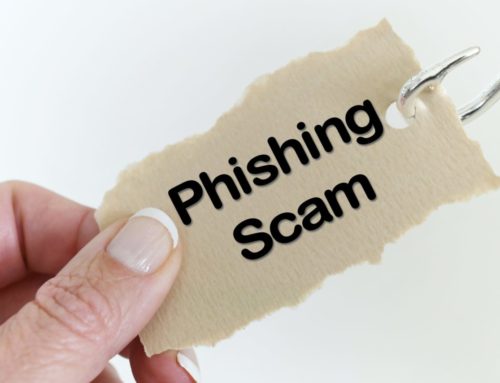
 We’re not referring to the delicious potted meat you’ve grown to love (or hate), though it’s certainly named for its ubiquity. Spam in its most loathsome form — the unsolicited, commercial email sent indiscriminately and in bulk, rarely for non-nefarious purposes — is serious business.
We’re not referring to the delicious potted meat you’ve grown to love (or hate), though it’s certainly named for its ubiquity. Spam in its most loathsome form — the unsolicited, commercial email sent indiscriminately and in bulk, rarely for non-nefarious purposes — is serious business.
On the Seriousness of Spam
Anyone who gets spam a lot knows it’s no laughing matter (forgive us, Monty Python) — its economics, even less so. According to a 2012 study by a pair of Google and Microsoft employees, the cost of email spam to American businesses and consumers tops $20 billion annually — an estimate even they admit is conservative compared to similar surveys.
Comprising this cost are not just spam’s sky-high share of internet traffic, or the necessity of IT personnel to defend against its harms, but also the lost productivity of the employees whose inboxes are being inundated on the daily. Sure, maybe it’s just one email to delete here, another to delete there, but those half-seconds of distraction soon add up to dollars. Quite a few of them, if that figure is accurate. And, if a spam email is a phishing attempt, as you know that cost of engagement could be much, much higher.
Frustratingly, this lost productivity isn’t even consistent year round. When researchers began tracking spam, they found that it was seasonal. Two of the most important seasons for American businesses, early summer season, and the winter holidays, arrive with a marked influx of spam — noticeable enough that clients often head to their managed IT service provider with questions. While this seasonal spam increase is normal, and should be expected, that doesn’t mean you have to take it lying down. Nor should any business have to.
A Field Guide to Spam
Much like the tasty potted meat, email spam comes in a variety of flavors: fake job offers, sketchy pharmaceutical ads, enhancers, diet products, advance fee fraud (e.g. Nigerian email scams), phishing attempts, and many more. Luckily, no matter which flavor finds itself in your inbox, the method of handling it is the same as the rest.
Much like a poisonous snake, the safest way to handle spam is not at all — simply opening spam message can put your at risk of malware. The wisest move is to ship it unceremoniously to your spam folder, but if idle temptation wins out, never ever click on any attachments or links included in a spam email. No good will come of it.
An equally surefire way to avoid getting burned by spam is to never open an email from an unfamiliar sender. If you’re the kind who likes to open everything, just in case it happens to be important, you’re going to have to be a bit more analytical. (Heads up: this next paragraph is for you.)
Here, understanding what spam looks like is key. Take note of the subject lines of every emails you open, and be on the lookout for common spam topics. Odd uses of capitalization, too many spaces between words, or atypical punctuation use can also clue you in. In a similar vein, keep an eye out for typos in key words or phrases. Remember, spam can come from all over the world, so emails containing broken English can be a dead giveaway.
Remember, also, that legitimate business have copywriters, coders, and graphic designers whose entire jobs are to slave over their marketing emails. Every element, down to the logo and the apostrophes, is fussed over. If any of the images, icons, or buttons in the email seem to be of low quality — that’s right, you can tell by the pixels — take your hand off that mouse and back away. It’s just not worth it.
If you receive a questionable email that appears to be from a business you do know, such as your bank, pay attention to the call to action. If an email requests personal information, and includes a link for you to follow, it could very well be a phishing attempt. Since a URL can be masked, get into the habit of typing any links (even those sent from people your trust) manually into your search bar. It important to internalize that anything remotely out of the ordinary must be looked at with a skeptical eye. You can never be too careful.
Preventing Spam
One of the best ways to avoid spam is to never give your email address out, or to compartmentalize content across a number of different accounts. While this might seem like a lot of work, it’s very effective.
By using separate emails accounts for family and friends, shopping and social media, your work, and your financial accounts (or anything that requires significant personal information, such as your SSN), suspicious emails become that much more obvious. If an email from Wells Fargo shows up in the account you only use for shopping or social media, its spoofed origin will be undeniable. Plus, as an added bonus, if one account is compromised, it’s less likely to spill over into the rest of your life.
Even if you do decide to go the above route, you can stop unsolicited messages at your email host as well. Most modern email platforms (such as Gmail) come with built-in spam filters, but they’re nowhere near perfect. It’s a constant battle of who can out-innovate the other. To their credit, the tech companies do appear to be winning, but as long as there is money to be made from the gullible or complacent, scammers and spammers will always exist.
By setting up rules at the source, too, you can filter out emails before they get to your inbox. But if any do slip through, don’t just delete them. Mark them as spam instead. Over time you will train your filter, and reduce the amount of spam in your world.
While we can be charitable and applaud peoples misplaced efforts to “work the system,” it doesn’t change how exhausting is to wake up to an inbox engulfed in spam each morning. Just know, it doesn’t have to be that way.
Contact JNT Tek today for an email assessment and learn how else your company might benefit from professional email management.




CONNECT WITH US!